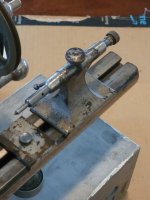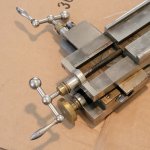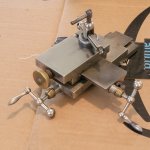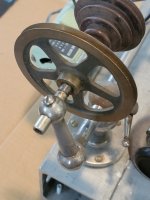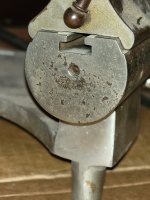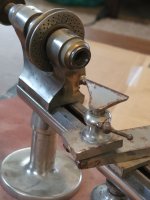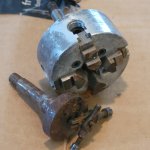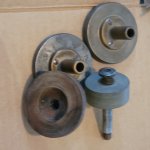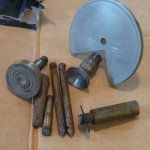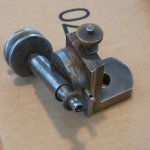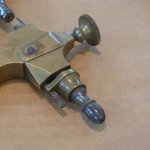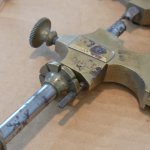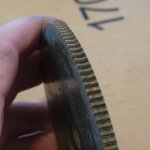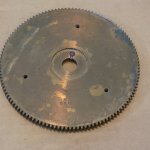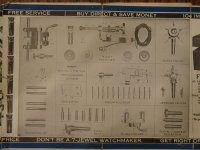IHateMayonnaise
Aluminum
- Joined
- Jul 17, 2016
- Location
- Albuquerque
I generally hate these threads, but I couldn't resist...
I'm out of town and bought the following lot sight-unseen. I will hopefully pick it up someone next week. I caught the ad on Craigslist 10 minutes after it was posted and locked it down immediately. It's being sold by a gentleman whose father passed about 4 years ago, and his other half indicated that it's time to unload. Very much a "finding a good home" situation. I've always wanted a smaller lathe, and I'm sure I'll cherish these specimens until my last days, unless I find them a good home to a deserving party down the road. I'm not posting this to wag my ding-dong around, I just genuinely don't know what I bought. I've had a few lathes and so I'm not entirely ignorant (jury still out?), but the myriad flavors of jewelers lathes is bewildering.
Anywho, I'm hoping that a more learned person can tell me what I have by looking at it. I love the history of old machines, and would like to tear into anything I can find to learn more about these lathes. My cursory search indicates that at least one is an American Watchmaker, and some gears for screw cutting perhaps. Anyone have any insights as to what is here?
Cheers,
IHateMayonnaise
I'm out of town and bought the following lot sight-unseen. I will hopefully pick it up someone next week. I caught the ad on Craigslist 10 minutes after it was posted and locked it down immediately. It's being sold by a gentleman whose father passed about 4 years ago, and his other half indicated that it's time to unload. Very much a "finding a good home" situation. I've always wanted a smaller lathe, and I'm sure I'll cherish these specimens until my last days, unless I find them a good home to a deserving party down the road. I'm not posting this to wag my ding-dong around, I just genuinely don't know what I bought. I've had a few lathes and so I'm not entirely ignorant (jury still out?), but the myriad flavors of jewelers lathes is bewildering.
Anywho, I'm hoping that a more learned person can tell me what I have by looking at it. I love the history of old machines, and would like to tear into anything I can find to learn more about these lathes. My cursory search indicates that at least one is an American Watchmaker, and some gears for screw cutting perhaps. Anyone have any insights as to what is here?
Cheers,
IHateMayonnaise
Attachments
-
 00U0U_2875eguGu6Vz_0fu0bC_1200x900-2.jpg70.5 KB · Views: 90
00U0U_2875eguGu6Vz_0fu0bC_1200x900-2.jpg70.5 KB · Views: 90 -
 00R0R_lp5HKkYdSwWz_0fu0bC_1200x900-1.jpg67.7 KB · Views: 89
00R0R_lp5HKkYdSwWz_0fu0bC_1200x900-1.jpg67.7 KB · Views: 89 -
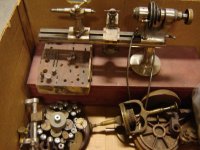 00r0r_gqAmv3mDIqJz_0fu0bC_1200x900-1.jpg70.9 KB · Views: 82
00r0r_gqAmv3mDIqJz_0fu0bC_1200x900-1.jpg70.9 KB · Views: 82 -
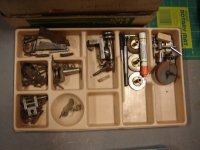 00J0J_c3WW1aSaPJ7z_0fu0bC_1200x900-1.jpg63 KB · Views: 79
00J0J_c3WW1aSaPJ7z_0fu0bC_1200x900-1.jpg63 KB · Views: 79 -
 00f0f_4KBvM6YoZ5Rz_0fu0bC_1200x900-1.jpg69 KB · Views: 87
00f0f_4KBvM6YoZ5Rz_0fu0bC_1200x900-1.jpg69 KB · Views: 87





